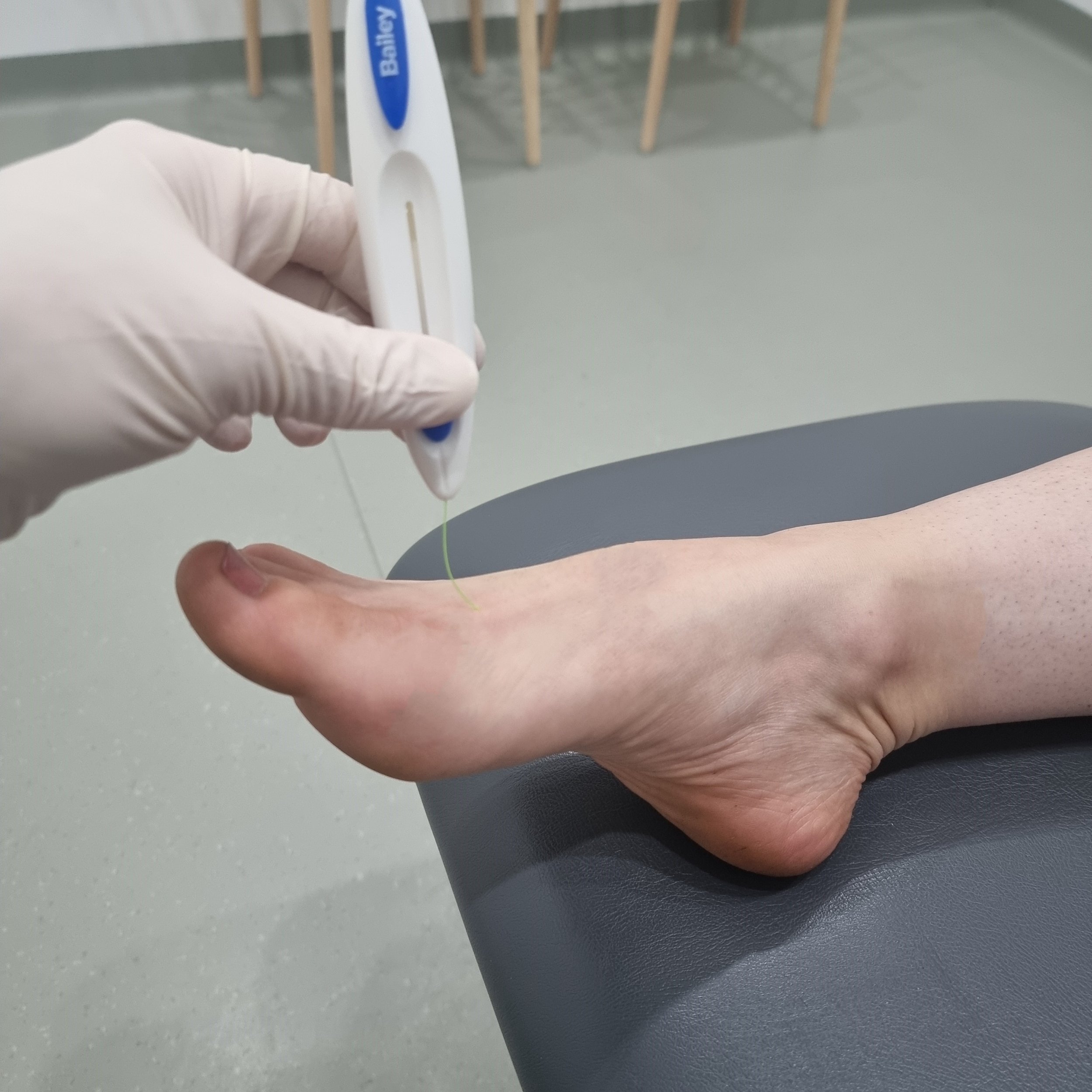Diabetic Foot Care
HOW DOES DIABETES AFFECT YOUR FEET AND LEGS?
When you think of Diabetes, things like blood sugar and insulin probably come to mind. Something that you may not have thought of was feet? Diabetes affects anywhere your blood goes, and with the toes being the furthest thing from your heart - it’s no surprise we can run into trouble! Our feet also sense the world around us. They’ll let you know when the sand at the beach is scolding hot or if you need some socks on during a chilly winter’s night. We bet that you know that feeling of knocking your big toe on the coffee table - having good sensation in your feet is not only important in cases like that, but also for detecting changes in your feet like a callous that’s growing a bit too thick, or maybe an itch between the toes that might be the start of tinea, also known as athlete's foot. Having good awareness of your feet is crucial for people who have diabetes.
How does diabetes affect the feet?
Over time, high blood glucose levels can cause changes to the blood vessels, especially the tiny capillaries in the toes, as well as the coating around the nerves. When the capillaries have become restricted and the nerves have lost their ability to tell you about an injury, a cycle can develop which results in a wound or ulcer forming. Stepping on something sharp may just be perceived as pressure, the person keeps walking on that injury due to that altered sensation, and with the change in blood flow the wound healing time is lengthened.
If untreated, changes to blood flow may lead to chronic symptoms, including changes in the size of the lower limb muscles, dry skin, change of colour in the legs and ankle swelling. Other common issues found in those who have diabetes are clawed toes, loss of hair and weakened muscles which can lead to muscle or tendon injuries
Diabetes and Nerve Function
Damaged nerve function is called neuropathy. Neuropathy may cause pain, tingling, weakness or reduced sensation in the feet and lower limbs. Changes in the nerves firing your muscles may also occur. Sometimes people will describe there being a feeling of walking on cotton wool, or a tightness under their feet. A loss of sensitivity in the feet often leads to an abnormal walking pattern causing an increase in callous or corn formation. Most of us have them from time to time (especially if we are wearing shoes that are unsupportive), but add in walking on a foot with reduced sensitivity and the risk of ulceration increases.
Due to the potential for altered sensation over time, we recommend daily checks beneath your feet with a mirror to see problems the day they happen. Checking daily will make identifying the cause much easier than if it has been lingering for some time. It might be a simple fix, such as a change in your footwear, or avoiding going barefoot outside.
What can I do to care for my feet?
We all know that regular exercise is good for us! For those with diabetes, exercise is necessary to use up excess blood sugar. More than that though, it also keeps those calves strong, reduces ankle oedema, flushes out those tiny capillaries in your toes that might be clogging up, and keeps the cells that secrete the oils on your skin ticking along.
There are a few simple things you can do to help manage the health of your feet at home when you have diabetes. Most foot problems can be avoided by following a daily foot care routine in addition to regular monitoring (at home and by your health professional) for any changes to your feet.
Check your feet daily. A Magnifying make up mirror is perfect for this
Schedule annual check ups with your podiatrist for assessments of your blood flow and nerve sensation
Trim your toenails regularly or book in with Phil or Ed for a general foot care treatment
Moisturise your feet everyday, but not between your toes. This will keep your skin hydrated and assist in strengthening the skin's protective barrier - better to bruise than have a skin tear!
Ensure that your feet are clean and dry, especially between the toes.
Bamboo socks are an excellent option if you are prone to skin issues as they are more breathable.
What am I looking for when checking my feet?
Anything unusual! You might find one of the grandkid’s stickers stuck to your foot which could cause a slip, an area of redness caused by that new pair of shoes or the corn on your little toe joint is starting to turn red and swell. Worse yet a callous is starting to swell and go white - this might be the start of an ulcer beneath a large callous. More often than not you’ll see they’re just the same as yesterday, but it’s best to check daily so issues are caught as quickly as possible.
Perhaps you don't want to seem like you are overreacting - putting off a check or having a ‘She'll be right’ approach could put your feet at risk of diabetes-related foot problems. Daily monitoring and being proactive about any foot changes are your first line of defence against more serious foot concerns.
Treatments and Management:
A Monofilament Nerve Test being performed, to determine the sensation of the nerves in the foot.
Along with diligent home care, having at least an annual check with one one of our podiatrists is recommended. When you book in for a diabetic assessment there are certain tests that the podiatrists may perform. Our podiatrists use doppler ultrasound to assess blood flow and blood vessel health. This is a reliable and non-invasive way to diagnose blood flow velocity and provides a real time result for the potential of arterial occlusive disease. During a monofilament nerve test the podiatrist applies a light pressure to areas of the foot with a monofilament similar to firm fishing line, to determine the sensation of the nerves. Part of a diabetic assessment will look at protective measures to avoid damage before it occurs, such as footwear advice, foot care education in relation to nail trimming and skin care.
Orthoses and Diabetes
If you find that you’re prone to a large recurring callous under the big toe joint, or maybe persistent corns on the tops of your little toes, a change of footwear and possibly use of orthotics may help to shift the forces back to the way the foot should be working.
Orthoses can be used in conjunction with appropriate footwear to offload areas that have an increased risk of ulceration. Deflective padding and special top cover materials can be used to prevent recurrence of ulceration. In severe cases, we may suggest using orthoses to deflect pressure away from the wound site, alleviating pressure and allowing the ulcer to heal. Improving cushioning in pressure areas and decreasing shear forces is often needed as well as redirecting the load of joints during walking which can be responsible for the start of ulcers. In some cases, this might be with a post operative boot and padding.
If you would like more information or would like to book in an appointment with Phillip or Edward for a diabetic assessment give us a call on 02 4707 6558 or book an appointment here.


